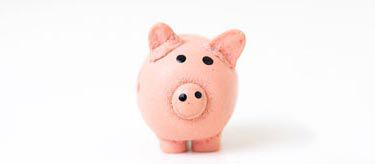6 simple tips to start saving for retirement in your 20s
Planning for retirement early lets you start small. Use these 6 simple tips for saving for retirement in your 20s.
When you're in your 20s, retirement can seem so far away. First you've got to get the hang of budgeting and tame your debt, all while settling into a new job. How are you supposed to do all that and save for retirement without resigning yourself to living with furniture made from empty pizza boxes?
Don't panic. Building your retirement savings early gives you the breathing room to take baby steps. Here are six tips to make saving for retirement in your 20s easy.
1. Contribute to employer-matched retirement plans
Does your employer match your contributions to a retirement plan? Matched contributions may have a limit, and your employer might only offer to match part of what you contribute, but that's still an immediate return on your investment. If this is an option, it's a great way to start saving for retirement in your 20s when money is tight. If not, the next tip is your starting point!
2. Open an RRSP or a TFSA
When you save for retirement with a Registered Retirement Savings Plan (RRSP), your contributions and the interest (or other investment income) you earn are tax-deductible, and you won't pay income tax until you make a withdrawal from the account. This leaves more money in your budget, allowing you to pay down your student debt faster or use your tax refund to top up your retirement savings.
Contributions to a Tax-Free Savings Account (TFSA) aren't tax-deductible, but your investments grow tax-free, can be used for any kind of savings, including retirement, and withdrawals aren't subject to income tax.
These plans work best over a long period of time. Thanks to compound interest, any money you put in these accounts will build on itself. The sooner you start contributing, the bigger and faster your money can grow.
3. Consider your time horizon and risk tolerance
Your retirement plan investment choices may include Guaranteed Investment Certificates, mutual funds, stocks, or even cash. How do you pick what's best?
Whether you choose to work with a financial adviser or go it alone, you'll select investments suited to your situation. Ask yourself:
- When do you plan to retire?
- What's your level of investment knowledge?
- Do you have any other assets or sources of income?
- How comfortable are you with investment fluctuation?
Your answers will direct you to conservative, balanced, conservative growth, or aggressive investment choices. Investors in their 20s usually have a target retirement date 30 to 40 years away. This alone may point you to aggressive investments that offer the potential of a high long-term return rate. Don't worry as much about fluctuating returns in the short term — you're playing the long game.
“As your income increases, your retirement savings contributions should too. Making a habit of upping your savings can help you to stay ahead of inflation, and keep you on track to avoid a retirement saving shortfall down the road.”
4. Automate your contributions
Automatic retirement contributions let you establish a saving habit and protect your financial priorities every month without you even having to think about it.
To keep things simple, set payment dates that match your paycheque deposit dates. You'll probably hear that you should put 10 to 15 percent of your income toward retirement, but in reality, there's no one universal answer. It all depends on how much you can afford to save now and how much you'll need in retirement. Some experts suggest saving enough to provide about 70 percent of your current income to live on each year after you retire.
5. Increase contributions annually
As your income increases, your retirement savings contributions should too. Making a habit of upping your savings can help you to stay ahead of inflation, and keep you on track to avoid a retirement saving shortfall down the road.
6. Get creative to find the cash for retirement planning
If you're in your 20s, chances are you're living on a tight budget, and it's easy to skip over retirement planning. But with a little motivation, being in your 20s can also mean you're in a unique position to find extra cash to put away in your retirement account.
If you don't have kids or a mortgage, you may have more time and flexibility than you realize. Could you tolerate giving up your one-bedroom apartment to move in with roommates for a year? How about spending a few hours after work or on the weekends spinning your creative hobby into a freelance gig? You could even relive your babysitting glory days. Or drive for Uber, participate in a medical study, or become a live art model. When you're retired, you'll enjoy looking back at the fun lengths you went to get there.
Everyone has their own idea of what kind of retiree they're going to be — glamorous traveler, leisurely golfer, kindly senior citizen who walks around parks befriending pigeons — but one thing is consistent: none of those options, even the last one, is possible without a healthy cash flow. The good news is that you're ahead of the curve right now. You don't have to put away half your paycheque every month to ensure you'll be comfortable in retirement. Start small and prepare to marvel at how it all adds up.


